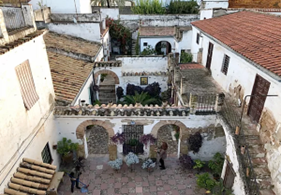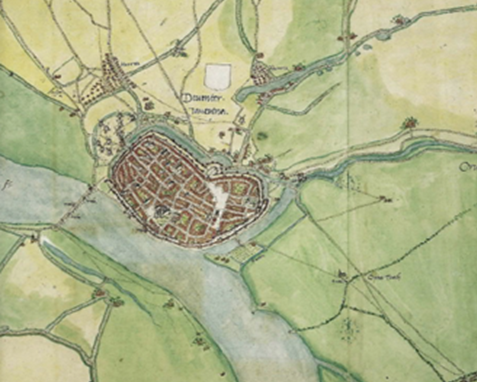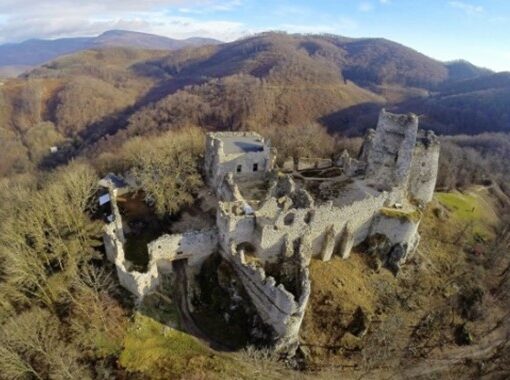Local heritage plans strengthening local competence and capacity through planning
NorwayLead
Main hazard(s)
Disaster Risk Management phase(s)
Type(s) of measure(s)
Background
Norway protects national cultural heritage mostly through the Cultural Heritage Act (1979) and the Planning and Building Act (2008). The latter Act defines a crucial role for Norwegian municipalities in safeguarding and managing cultural heritage assets, including to mobilise and engage local stakeholders and secure the necessary resources, tools and instruments. However, they face challenges mostly related to a lack of political buy-in on the importance of cultural heritage (which results in inefficient planning and management procedures), scarce knowledge on cultural heritage assets’ status and locations, high dependency on external stakeholders (such as museums, NGOs and civil groups) for cultural heritage management and insufficient coordination of local competence to ensure proper protection.
Sources
Fouseki, K., Guttormsen, T. S., & Swensen, G. (Eds.). (2019). Heritage and Sustainable Urban Transformations: Deep Cities. Routledge.
Interview with Kari Larsen, Directorate for Cultural Heritage, Norway
The Directorate for Cultural Heritage
The Directorate is the Ministry of the Environment’s advisory and executive body for the management of architectural and archaeological monuments, sites and cultural environments. It is responsible for the implementation of national cultural heritage policy. For more information on the Directorate for Cultural Heritage, visit: https://www.regjeringen.no/en/dep/kld/organisation/Subordinate-agencies/the-directorate-for-cultural-heritage/id85702/
Contact info
Kari Larsen; kari.larsen@ra.no
Detailed description
The Norwegian Directorate for Cultural Heritage has developed a series of initiatives to address the aforementioned challenges in municipalities. In 2011, it launched a programme to support municipalities in strengthening local competence and capacity through the production of local heritage plans. Such plans do not have to adopt a mandatory structure, but need to include the following elements: introduction, goals and targets, background information, legal and economic incentives used, historic overview, inventory of cultural assets and implementation plan. The programme was based on economic incentives (up to €10,000/municipality) granted to those municipalities holding the political authority to develop these plans and interested in establishing cooperation models with external institutions and organisations (such as museums or NGOs). Additionally, the programme would seek the establishment of local networks and arenas for knowledge exchange and promote capacity building and training through associations, web-pages, and social media and guidance documents. In 2014, the Directorate launched a campaign for more towns and cities to establish their own antiquarians and assisted with the creation of 11 new positions in a trial scheme between 2014-2016, strengthening in this way the local knowledge in relation with cultural assets [i]
[i] Fouseki, K., Guttormsen, T. S., & Swensen, G. (Eds.). (2019). Heritage and Sustainable Urban Transformations: Deep Cities. Routledge)
Main outcomes and highlights
- By 2019, 90 % out of the 422 Norwegian municipalities were working or had already adopted a local heritage plan.
- Dueto the Directorate’s initiatives, there has been a notable rise insocial and political awareness, participation and involvement regarding cultural heritage aspects, leading to a feeling of “social pride” for local history and cultural sites.
- The work of the municipalities and the identification and designation of new cultural sites through the development phase of their local heritage plans has created a broader and more diverse historic and cultural repertoire.
- Some urban social benefits such as, education, recreational/out-door activities, well-being and public health have been enhanced with the improvement of the local cultural heritage status.
- The Directorate’s activities –with emphasis on the strengthening of local heritage plans – have been included in the European Heritage Strategy for the 21st century Golden Collection of Good Practices.
Sucess factors
- Economic incentives are important to motivate municipalities in taking action.
- Taking into consideration how and when to involve the different agents (NGOs, citizens etc.) during the planning process to have a successful local participation process has been fundamental.
- The creation of a “trust atmosphere” is another factor that has helped in the success of the initiative, by leaving the decisions to the locals and only ‘nudging’ from the state level.
Lessons learned
- The preparation of the plans is time consuming, ca.2-4 years should be expected for each.
- The cooperation models arealso resource-intensive, requiring municipalities to coordinate dialogues across different stakeholders, arrange meetings, meet all partners, etc. It is important to consider the lack of capacity of small municipalities (e.g. where there might be just one person allocated to cultural heritage).
- At first, it is recommended not to be too ambitious in the preparation of the heritage plan, and it is encouraged to compile and summarise existing knowledge before supplementing the plan with new documentation.





